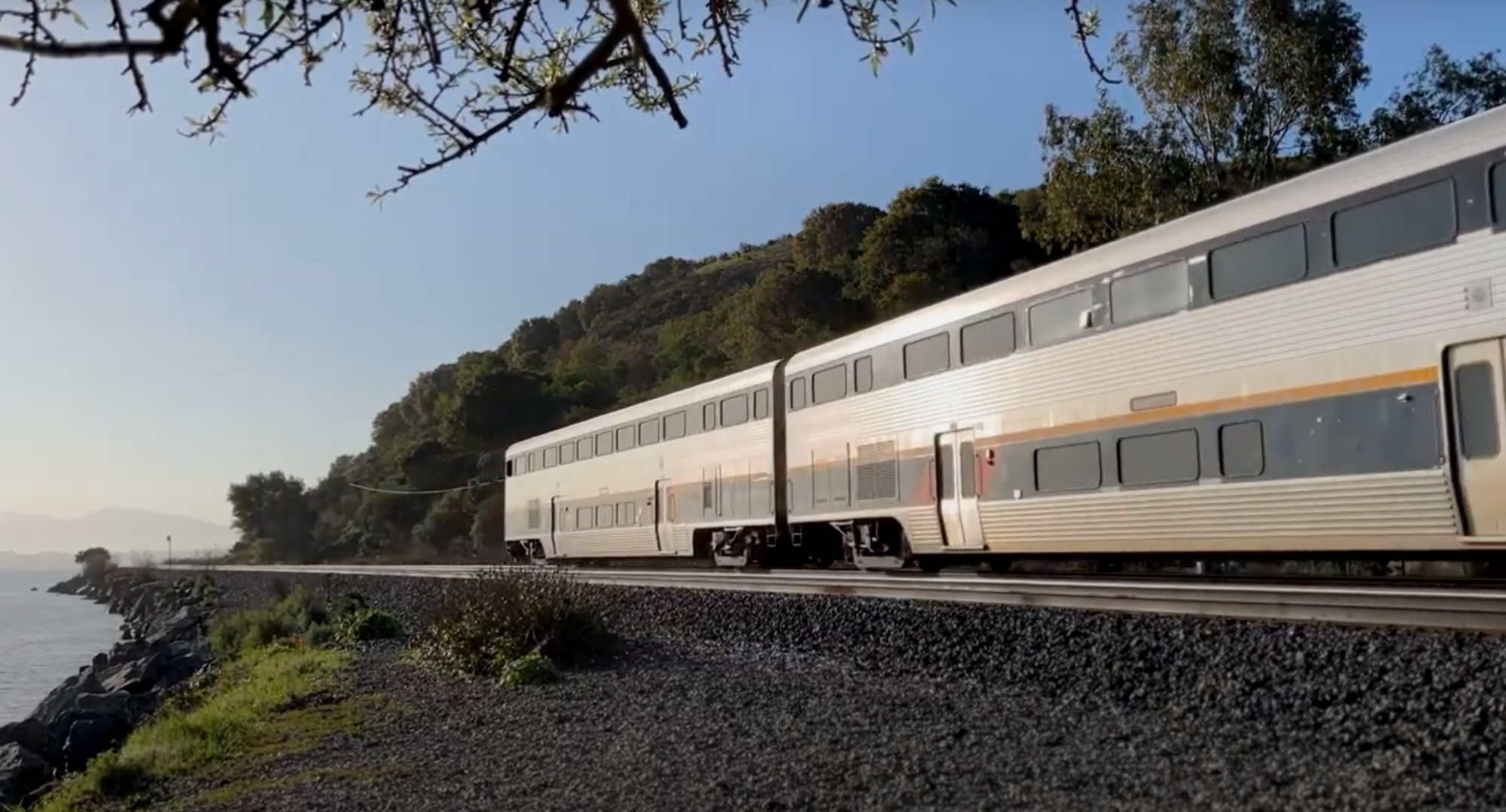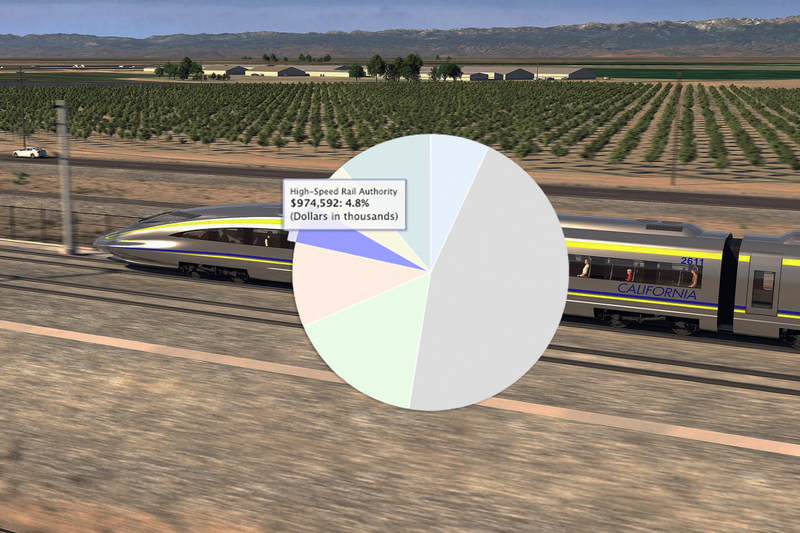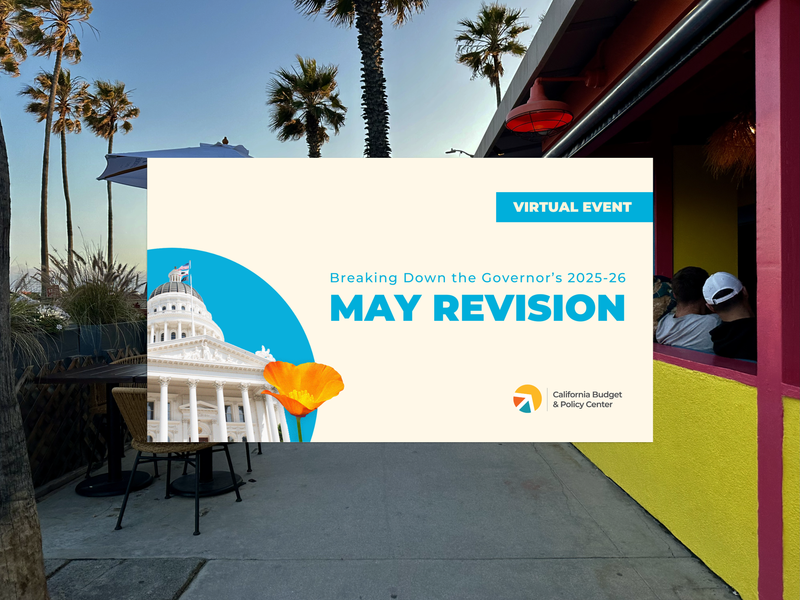These are the must-knows from the latest California State Rail Plan Fact Sheet
California’s 2025 State Rail Plan outlines a bold future for statewide passenger and freight rail, even as California's notorious high-speed rail project fall under greater scrutiny.
California’s rail system has long been a cornerstone of the state’s infrastructure—and the updated California State Rail Plan indicates the project is set to take on an even higher priority.
With climate goals, equity, and mobility at its core, the plan lays out a vision through 2050 for a sustainable, high-capacity rail network that connects more Californians to opportunity, reduces dependence on cars, and supports economic growth.
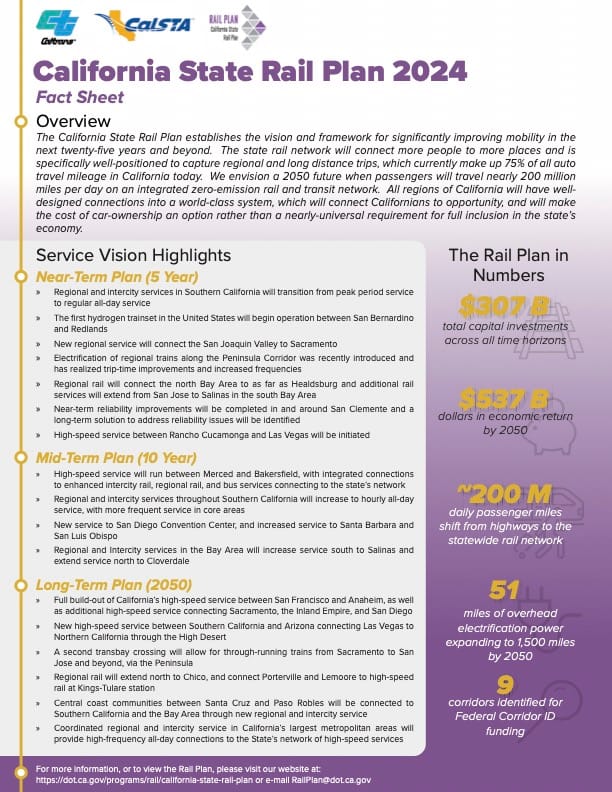
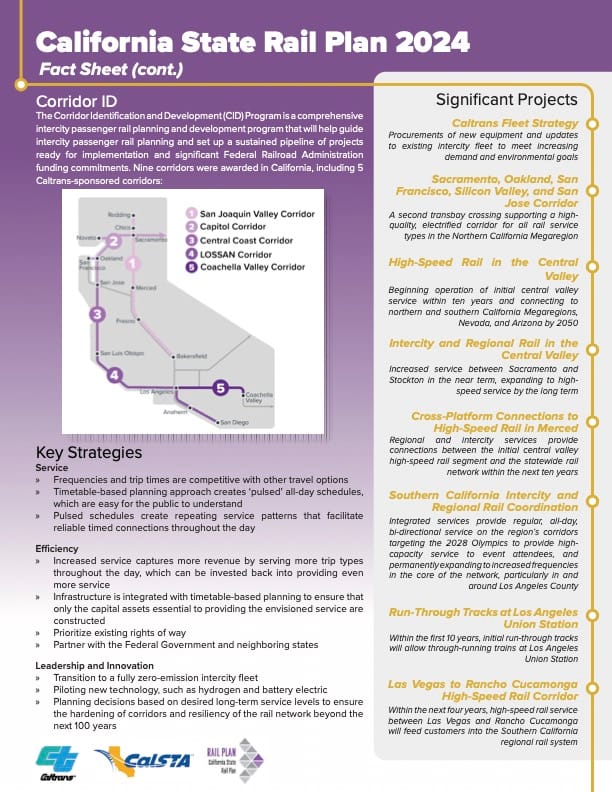
This official California State Rail Plan Fact Sheet remains accurate as of 2025.
Here are the must-knows from the official California State Rail Plan Fact Sheet.
What Is the California State Rail Plan?
The California State Rail Plan is the state’s comprehensive blueprint for the future of rail transportation. Developed by Caltrans in collaboration with federal, state, and regional partners, the plan aims to:
- Expand and integrate passenger and freight rail systems
- Improve mobility and access across all regions
- Reduce greenhouse gas emissions with zero-emission technologies
- Promote equity by including disadvantaged communities in planning
- Provide a cost-effective and sustainable alternative to driving
Vision for 2050
The long-term vision is centered around a statewide, zero-emission rail and transit network that moves people and goods more efficiently than ever before. By 2050, California aims to:
- Shift 200 million daily passenger miles from highways to rail
- Expand electrified rail lines from 51 miles to 1,500 miles
- Generate $537 billion in economic return
- Invest $307 billion in total capital improvements
- Deliver full high-speed rail service from San Francisco to Anaheim, and beyond
Near-Term Rail Projects (Next 5 Years)
- Hydrogen-powered trains will debut between San Bernardino and Redlands, the first of their kind in the U.S.
- New service will link the San Joaquin Valley to Sacramento
- The Peninsula Corridor (Caltrain) has been electrified, improving speed and frequency
- San Jose to Salinas service will expand, alongside new North Bay rail to Healdsburg
- Reliability upgrades will be made in San Clemente, with a long-term fix planned
- High-speed rail between Rancho Cucamonga and Las Vegas will begin construction
- Merced to Bakersfield high-speed service will launch, connecting with statewide systems
Mid-Term Priorities (10-Year Outlook)
- Hourly, all-day service throughout Southern California, with enhanced frequency in dense corridors
- New station at the San Diego Convention Center
- Expanded rail to Santa Barbara, San Luis Obispo, Cloverdale, and Salinas
- Improved coordination between regional and intercity operators
Long-Term Goals (By 2050)
- Full build-out of high-speed rail between San Francisco and Anaheim
- New high-speed lines to Sacramento, San Diego, Arizona, and through the High Desert
- A second transbay crossing enabling direct service from Sacramento to San Jose
- Regional service expansion to Chico, Porterville, Lemoore, and coastal towns from Santa Cruz to Paso Robles
- High-frequency, coordinated service across California’s largest metro areas
Key Strategies Driving the Plan
- Timetable-based scheduling with regular, easy-to-understand "pulse" departures
- Zero-emission technology, including battery-electric and hydrogen-powered trains
- Integrated infrastructure planning to build only what is needed
- Equity-first approach, involving tribal governments and priority communities in decision-making
- Partnerships with the Federal Government and neighboring states to leverage funding and coordination
Featured Projects to Watch
- Caltrans Fleet Strategy: New trainsets to replace aging intercity fleets and meet emissions goals
- Central Valley High-Speed Rail: Launch of service within 10 years, with expansion north and south by 2050
- Los Angeles Union Station Run-Through Tracks: Construction of new tracks to allow through-running trains
- Southern California Olympic Service (2028): High-capacity, all-day regional service ahead of the Summer Games
- Las Vegas–Rancho Cucamonga High-Speed Line: New interstate corridor feeding into SoCal’s rail network
- Second Transbay Crossing: A transformative megaproject for Northern California's transit future
California's Place in the National Rail Network
The Federal Railroad Administration’s Corridor Identification and Development (CID) Program has awarded nine corridors in California, including five sponsored by Caltrans. This positions California for significant federal investment in intercity rail.
Learn More
To explore the full California State Rail Plan or stay up to date on projects, check updates in:
🔗 https://dot.ca.gov/programs/rail/california-state-rail-plan
📧 Email: RailPlan@dot.ca.gov


